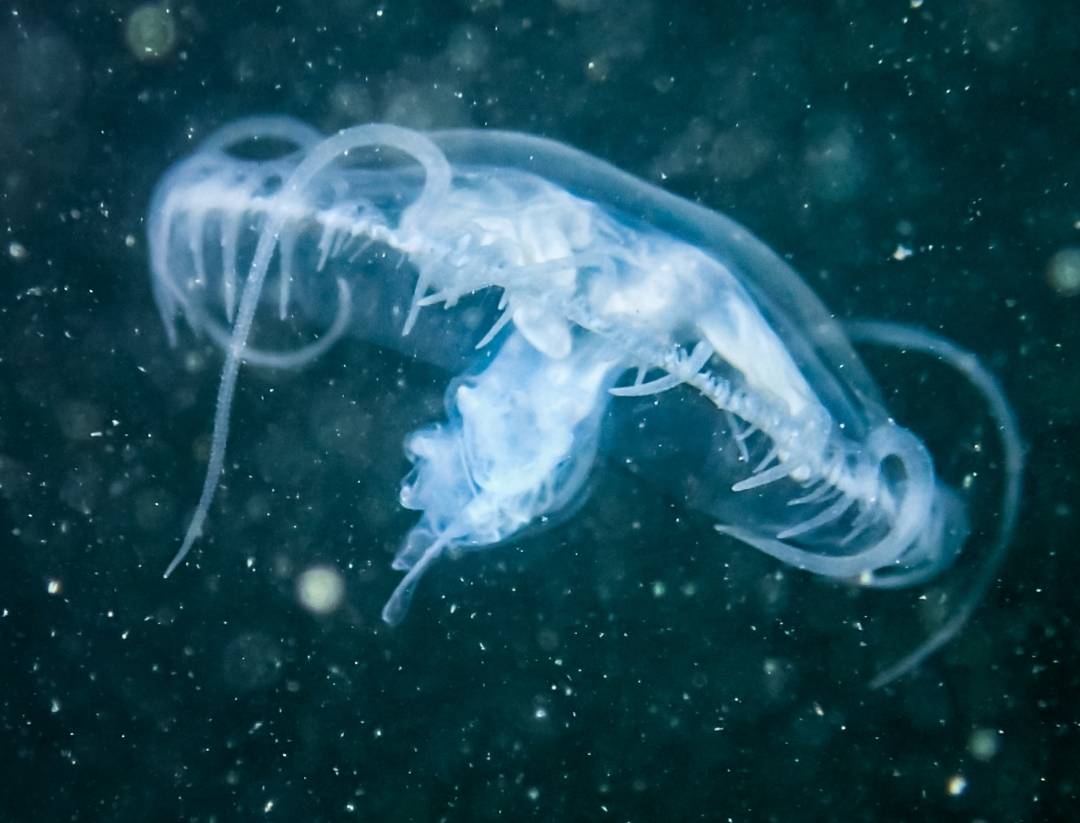How long does a jellyfish live
Their appearance dates back more than 700 million years. Throughout time, biologists and renowned celebrities have been interested in discovering its multiple singularities. Paying special attention to its origin, danger and morphology. What makes us think that it is one of the most peculiar species of the underwater world.
For the moment, let's focus on its origin. This beautiful aquatic animal became known through Aristotle, one of the most famous philosophers of ancient Greece. Among the hundreds of marine animals he described, named jellyfish as cnidae, meaning "sting". A pseudonym that perfectly represents the speed and power with which the venom is injected into our organism, every time a jellyfish stings us .
What is a jellyfish
Later, 20th century naturalists (following in the footsteps of Plato's disciple), created the phylum of cnidarians, which also included other species such as corals and sea anemones. Cnidarians are animals that have stinging cells and usually live in colonies on the seabed or in plankton communities.
Four centuries after Aristotle's contributions, the Roman writer Pliny the Elder went a step further in the analysis of theseinvertebrate . He observed their movements, which reminded him of the contractions and dilations of respiration. This similarity led him to rename them Pulmo marina, the marine lung.
The next person fascinated by jellyfish was Guillaume Rondelet, in his work Histoire entière des poissons, published in 1554. In this work he introduces the concept of "sea nettles", among which he differentiates the already recognized Rhizostoma pulmo.
And we reach the great turning point in the knowledge of zoology with the hand of Carl Linnaeus, who proposed a classification of the living world - both plant and animal - in his Systemanaturae. A fundamental text, in which introduces the name of jellyfish by comparison with the face of the Gorgon.
With the arrival of the 19th century, these cnidarians acquired first names based on ancient heroes, gods and goddesses. This is how we find Cepheas, the Cassiopeay Persay Chrysaorade the Geryonia and others.
This is how, over the centuries, outstanding philosophers and writers introduced the world to this unique animal.
How jellyfish reproduce
One of the most curious singularities refers to their reproduction system.
Have you ever wondered how these animals breed? Curiously, jellyfish reproduction does not take place inside the females, as is the case with mammals.
To understand the reproduction of these animals, we must first know where aquamalas live. All species of cnidarians live in the aquatic environment (either saltwater or freshwater). In this type of environment, internal fertilization is not common. Cnidarians are governed by external fertilization. Females and males release, respectively, eggs and spermatozoa to the outside. And if the species in question is a hermaphrodite, it releases both eggs and sperm.

There are also species with only the polyp form, species with the medusa form and species with both forms.
Polyp-shaped species release their gametes into the environment and then fertilization takes place, giving rise to a larva. It lives free until it adheres to the seabed in the form, once again, of a polyp.
When a species has both forms in its life cycle, polyps by strobilation (a type of asexual reproduction) produce jellyfish. These, when they grow, release gametes. Which, as in the previous case, are fertilized, producing a larva that will eventually form a polyp. And this, by budding, will give rise to a whole colony of polyps.
Parts of the jellyfish
Curious, isn't it? Well, it's just the beginning: the oddities of this species become more pronounced as we analyze its morphology. So much so that is the only known animal that has survived the evolution of millions of years without fundamental organs such as a brain or a heart. Nor do they have a central nervous system as such.
You may ask: How do jellyfish think if they do not have a brain? They have a network of nerves located in the epidermis, which facilitates the detection of other organisms. The moment they feel and/or perceive a touch, this stimulus is transmitted along the network. In other words, this hierarchical neural network controls each and every one of their movements and decisions.
So that you can quickly visualize the concept: this neural network is actuallya subdivision by zones or sections - like a pie or a pizza. Each of its tentacles is connected to one of those outer portions. And when they detect food, they catch it and the neurons in that zone are activated by sending messages tothe inner section, which is where the mouth is located.
What jellyfish eat
The diet of jellyfish is quite varied. They feed mainly on zooplankton.
Also part of their diet are small crustaceans, some small fish and/or other species of jellyfish. It is quite curious to see through the body of the jellyfish its last catch before being digested.
Aquavivores are located in the central zone in the web of marine atrophic webs. They are predators, but at the same time, they are food for other aquatic animals. Such as anemones, penguins, giant turtles, tuna, sharks or swordfish.
Thus, we can say that aquamalas are carnivorous. Their organism is adapted -through their tentacles- to capture prey, consume them and digest them slowly. Interestingly, our gelatinous "friends" have the ability to increase their size rapidly when food is abundant. Conversely, if food is scarce, they can shrink again.
Now that you know what jellyfish eat, let's explain what is zooplankton (or animal plankton). It is the term we use to designate the set of living organisms belonging to the Animal Kingdom that float among the first 200 meters of depth of open sea Almost nothing! Without forgetting those organisms belonging to freshwater lentic ecosystems (lakes, lagoons, etc.).

Characteristics of jellyfish
Apart from being the only animal without a brain or a heart, the anatomy of the aquamala is also characterized by:

So far these are the main characteristics of jellyfish. If you are interested in knowing them in more detail, you can visit our species section. We explain their classification, habitat, danger and morphology.



